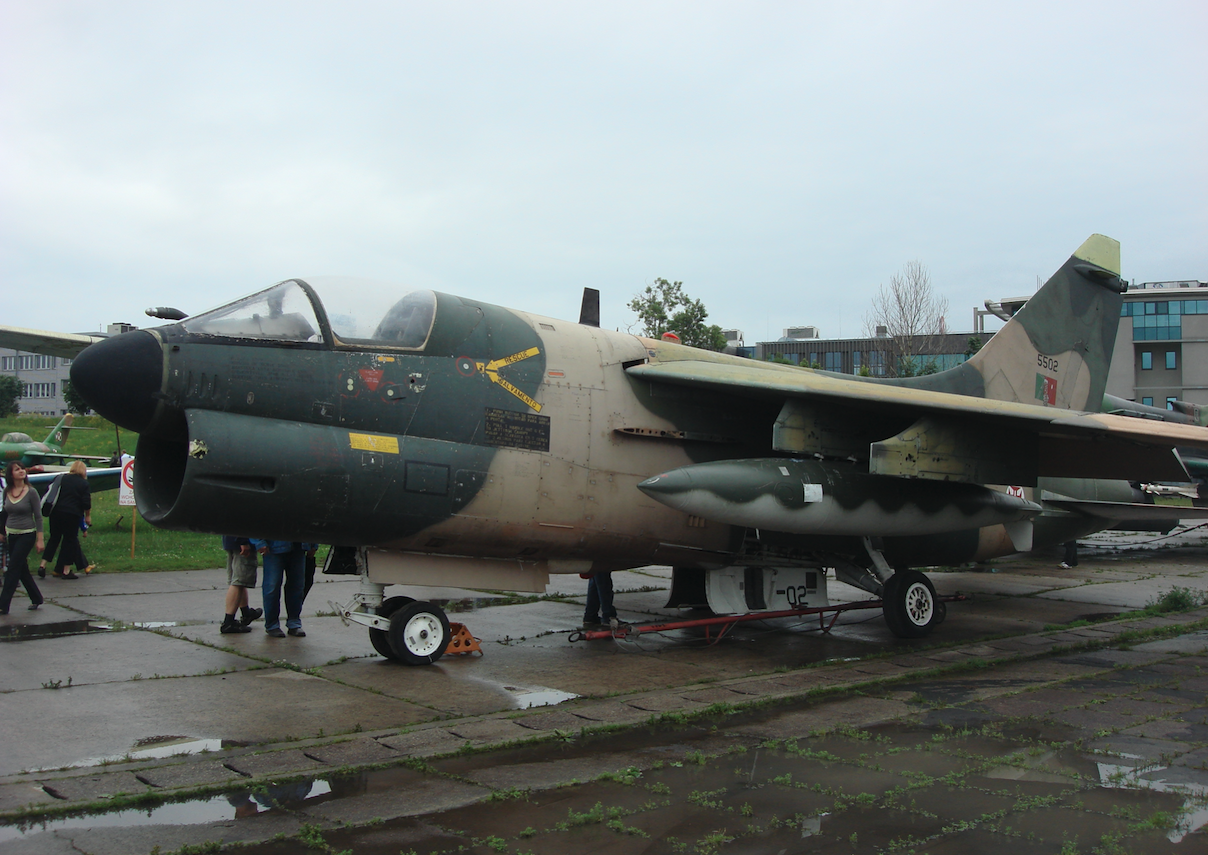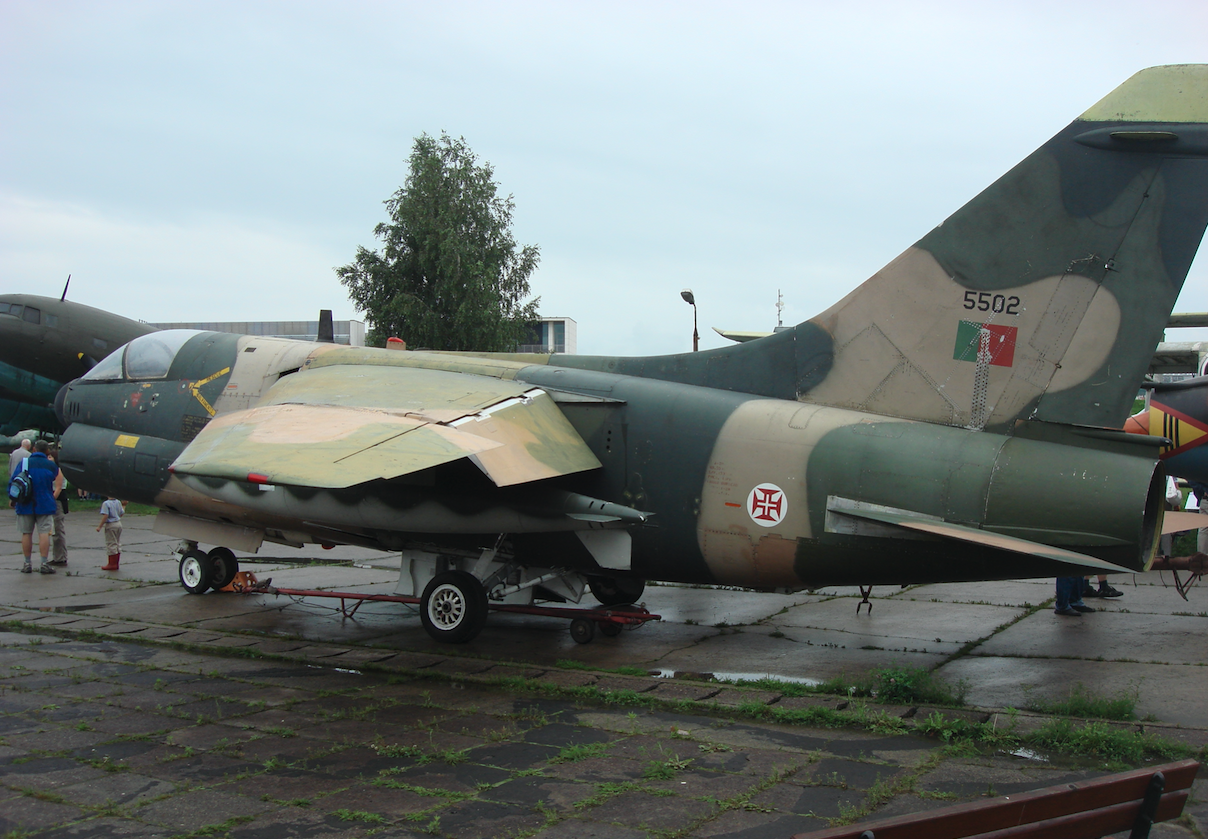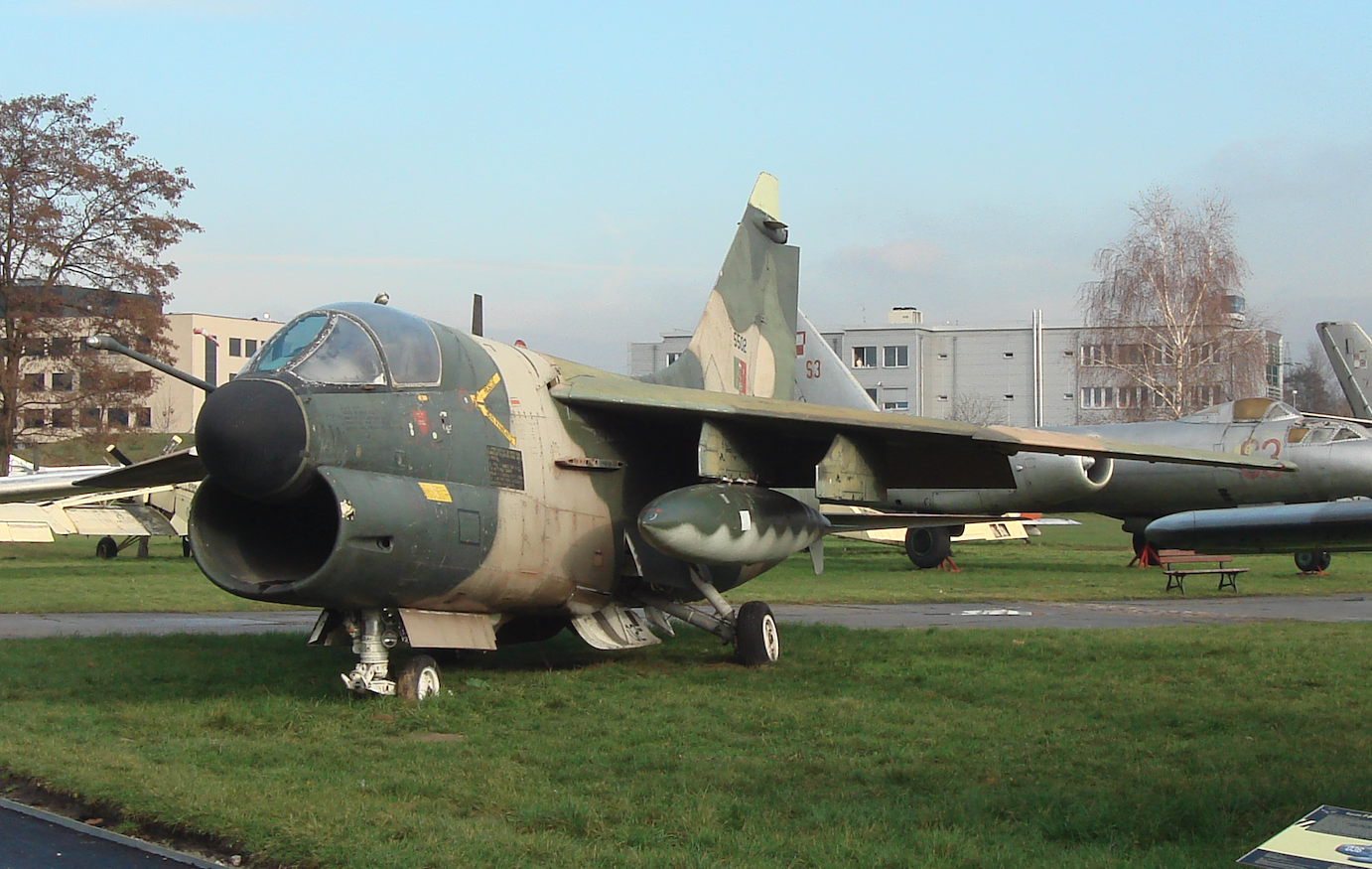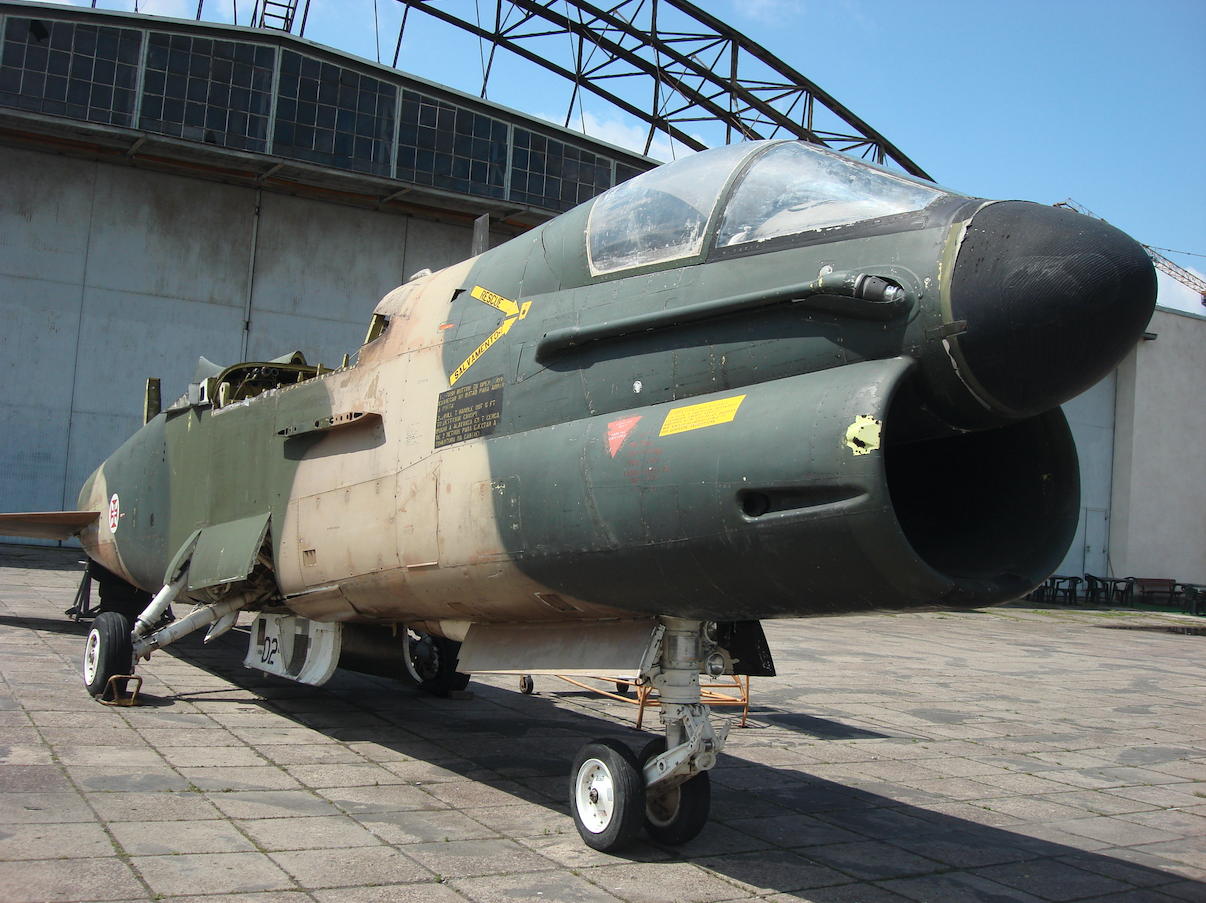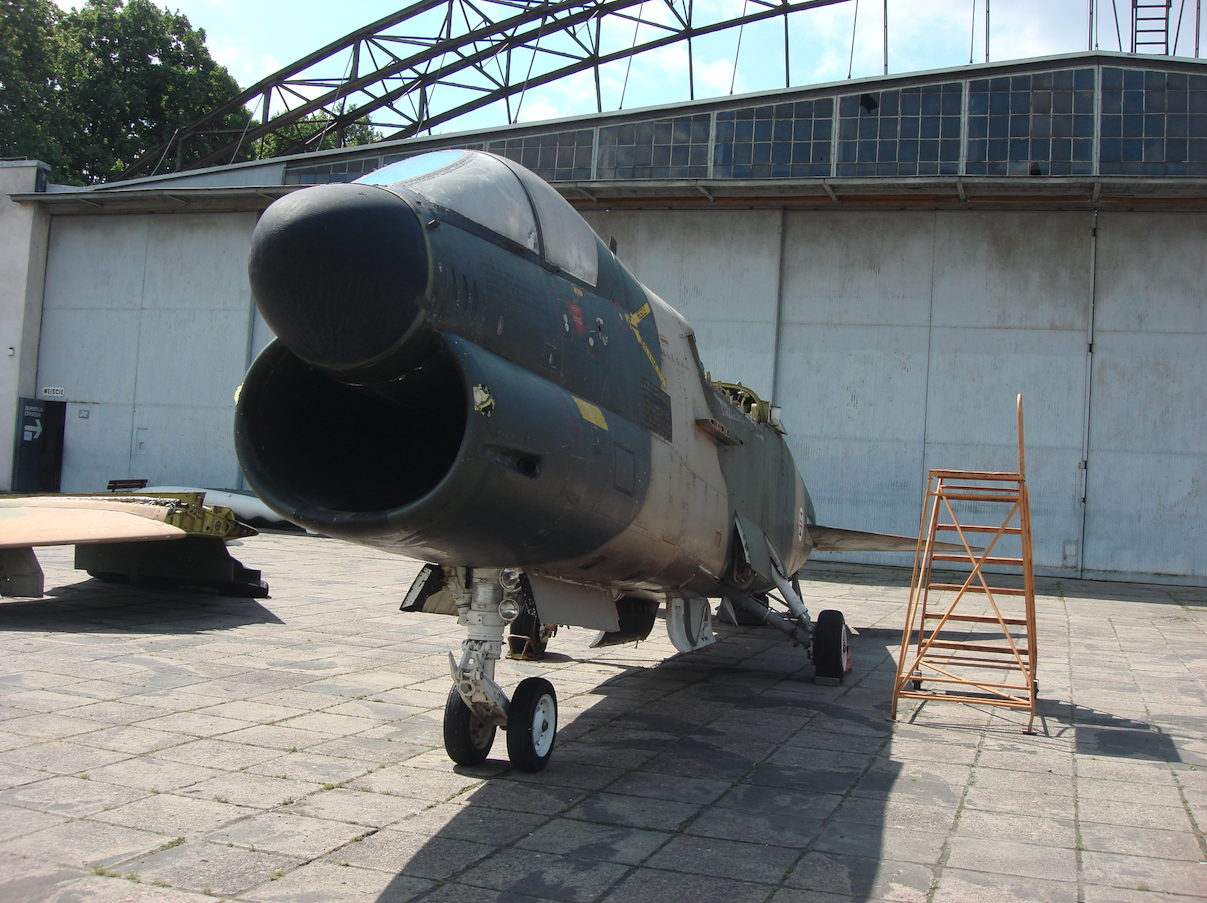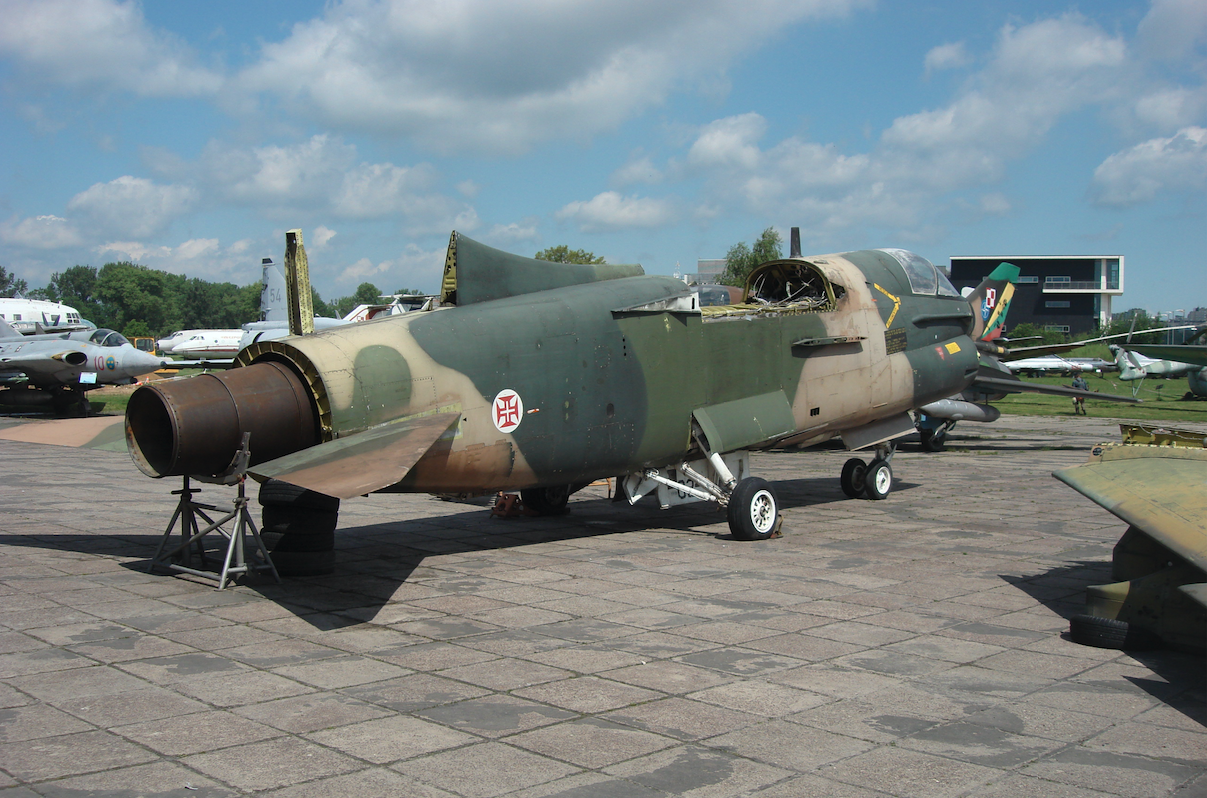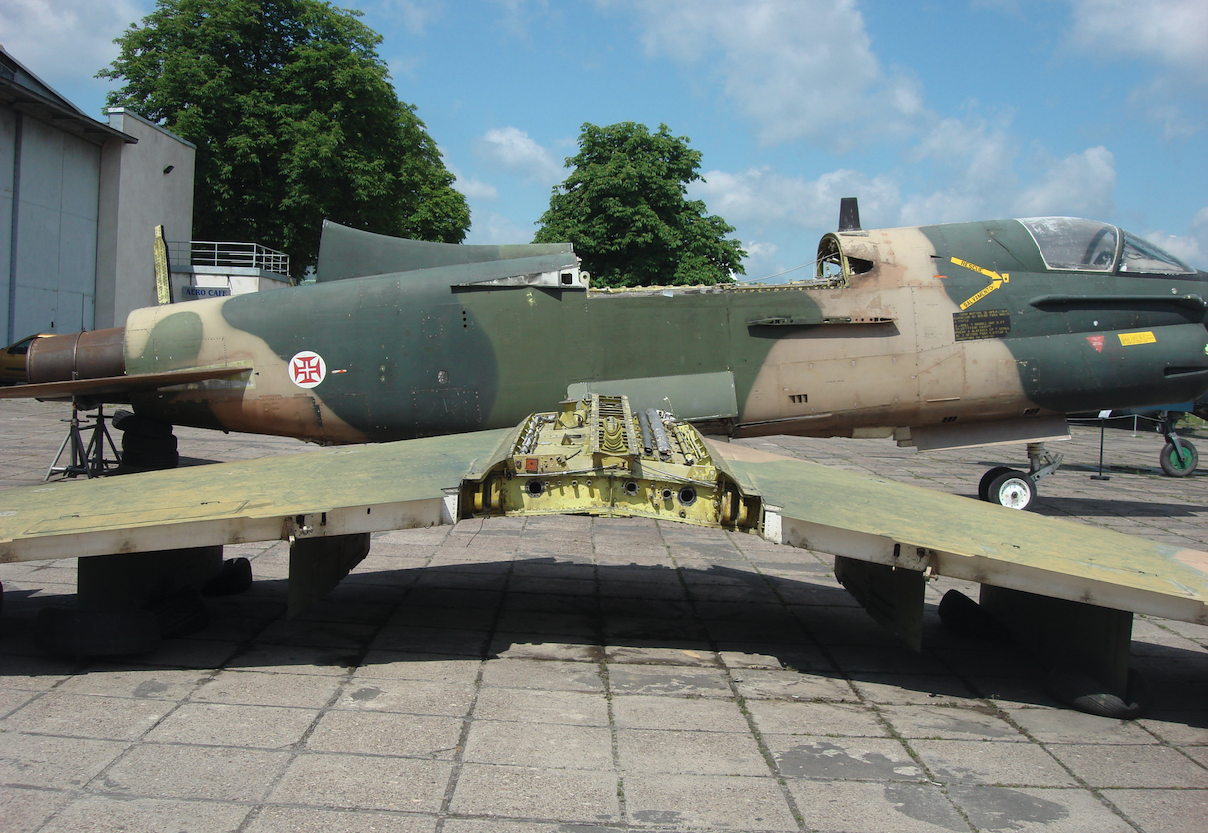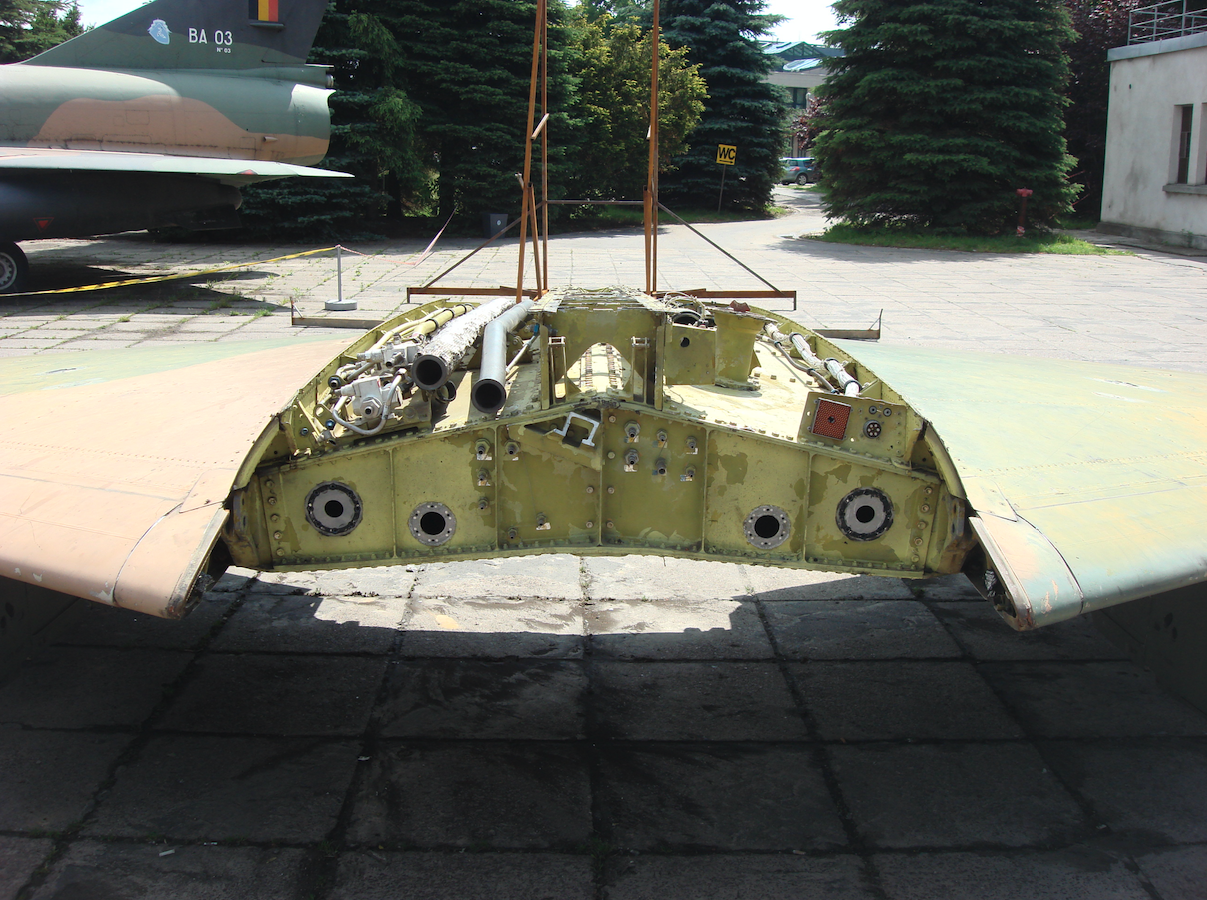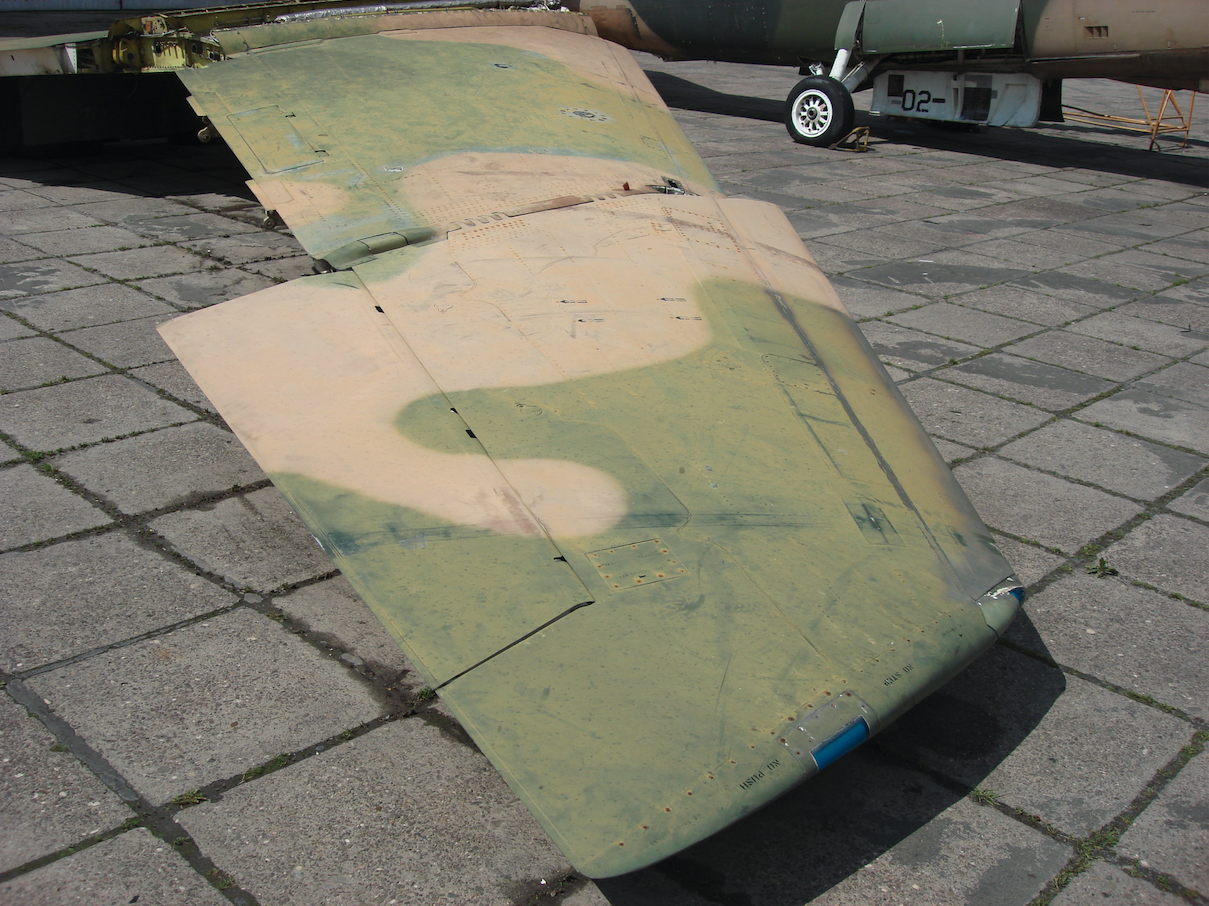Ling-Temco-Vought A-7 Corsair II. 1965.
History
In the 60s, the Lim-6 bis was the basic attack aircraft in the Polish Army. It was an aircraft developed by Polish engineers and was generally successful, and due to the lack of a successor, it was in the front line until 1984, when the Suchoj Su-22 planes were introduced into service. The counterpart of the Polish Lim-6 bis attack aircraft in the West was the FIAT G-91 attack aircraft. But these planes were few. However, in a situation of an armed (local) conflict, Poland would be attacked mainly by Vought A-7 Corsair II planes.
The Vought A-7 Corsair II is an American subsonic, single-engine, single-seat, turbojet, multi-role attack aircraft, adapted for operation from aircraft carriers. The Vought A-7 Corsair II was developed by Ling-Temco-Vought (LTV).
In February 1964, the US Navy announced that the Vought Corporation machines were the winner of the competition for the light in-flight assault aircraft. The basic requirement was that the single-crew plane was to carry more weapons at subsonic speed than the A-4 E Skyhawk used so far. As the deadline was very short, the company used teams developed in the 1950s for the F-8 Crusader. According to the initial contract, the company was to build 3 prototypes. The plane was designated A-7. Design work began in March 1964. The first flight took place on September 27, 1965.
A-7 versions.
The first version of the A-7 A was produced for the US NAVY. It was powered by a Pratt-Whitney TF-30 engine without an afterburner. This engine was used in the F-111 aircraft. TF-30-PW engine, 50.50 kN (5,100 kG) thrust. The A-7A aircraft operated only in normal weather conditions, but it could carry 6,805 kg (15,000 lb) of weapons. Production of the A-7 A ran from 1965 to the spring of 1968. 199 machines were built. The first aircraft were received by a combat unit from Cecil Field, Florida.
In 1966, the A-7 B aircraft was introduced into service, with the TF-30-PW engine with increased thrust to 54.30 kN (5,500 kG), and then to 59.60 kN (6,000 kG). 196 machines were built. The last plane was delivered in May 1969.
In 1967, the A-7 C version was developed and 66 were built. The plane had improved equipment.
In 1968, production of the A-7 D version began. It was the first version for the USAF, a land-based homing plane that could operate in "all weather conditions". At the request of the USAF, the plane received the Allison TF-41-A engine, with a thrust of 64.50 kN (6,500 kg). It was a licensed British Spey engine. 459 machines were built. The last machine was delivered in December 1976. In 1978, 383 machines were equipped with laser systems for guiding missiles and bombs.
Also in 1968, production of A-7 E planes started. It was an A-7 C version with British Spey engines. This aircraft was given the ability to carry nuclear weapons. The first flight took place on November 25, 1968. Deliveries to the army began in July 1969. 67 copies were built.
The A-7 aircraft served as a light attack aircraft and military support. In May 1970, these planes were put into combat in Vietnam. The planes were based on aircraft carriers; USS America, USS Kitty Hawk, USS Ranger, USS Nimitz, USS Dwightt D. Eisenhower, USS Forrestal and USS Constelation. During the war, the planes made over 100,000 sorties.
A large number of aircraft resulted in the construction of the TA-7 C training version. The planes were created by rebuilding the A-7 A and A-7 B aircraft. The aircraft was designated TA-7 C, and the first flight was made on December 17, 1976. The machines were left with their weapons. Additionally, the planes were given the option of airborne refueling.
The first foreign country to buy A-7s was Greece. The country bought 60 aircraft under the designation A-7 H. Gracja also bought 8 aircraft in the TA-7 C training version. The planes were delivered in 1975-1980. In the years 1993–1994, Gracja bought another batch of A-7 aircraft. It was 50 single-seater A-7 E and 18 two-seater TA-7 C. The planes came from surplus US NAVY. In 2014, Gracja was the last user of A-7 aircraft to withdraw from service. Their tasks began to be performed by the F-16 C / D planes.
The A-7 K version is a two-seater version of the A-7 D aircraft. The aircraft was intended for the USAF aviation. In 1979, funds were allocated to build 42 machines with delivery in 1981. The first aircraft was delivered to the USAF in April 1981. The planes were based, inter alia, at USAF bases in Germany.
The A-7 P version were planes intended for the Portuguese military aviation. It is a version of the equipment and armament level of the A-7 A, powered by the British Spey engine. A total of 20 were ordered. The first copies were delivered in August 1981. Then, more A-7 P and two-seater TA-7 P planes were purchased. In total, Portugal had 49 A-7 planes. In 1999, Portugal discontinued A-7 aircraft.
The third foreign user of A-7 planes was the Royal Thai Navy, which in 1995 received 18 American A-7 E and TA-7 C. These were planes from surplus US NAVY. The planes were withdrawn in 2007.
Summary.
In total, more than 1,500 A-7 aircraft were produced. Other sources reported 1,700 A-7s. The peak period of the aircraft’s use was the late 1970s, when the aircraft was used by almost all US NAVY units and many USAF aviation units.
The use of A-7 aircraft culminated in the first half of the 1980s and the Mediterranean basin. The planes took part in the US-Libyan conflict. It started with the fact that in 1981, Libya, following the spirit of the Western world, proclaimed the Gulf of Great Sytra as part of its territorial waters. The United States strongly opposed this and began systematic exercises of the 6th Fleet there. Planes systematically breached Libya’s airspace. On March 24, 1986, A-7s from the carrier USS Saratoga once again entered Libya’s airspace. The air defense fired 6 z-p class missiles in their direction. In retaliation, the A-7 planes destroyed missile guidance stations near the city of Sirte using anti-radiation missiles. The political situation was aggravated by the terrorist attack carried out on April 5, 1986 on a disco in West Berlin, where mainly American soldiers were present.
A significant disadvantage of the A-7 design was a large air brake located under the fuselage. Before landing, it had to be almost completely folded in order not to be damaged. The exposed chassis mechanically blocked the complete opening of the brake.
The A-7 P in Kraków.
In 2009, the Vought A-7 P Corsair II plane, which was used in Portugal, was brought to the Polish Aviation Museum in Kraków (Czyżyny). The plane was partially disassembled to make road transport easier. The plane has side number 5502. On its vertical tail there is a Portuguese Air Force Pennant (green and red rectangle). The Portuguese Military Aviation identification mark is painted on the fuselage (there is a red cross on the white circle). The entire plane is covered with a two-color green-brown camouflage.
The aircraft is equipped with in-flight fuel collection systems. It had two 20mm cannons on both sides of the fuselage. The plane has six attachments for carrying weapons. Two hanging fuel tanks were delivered with the plane. The pilot’s cabin is complete, along with the catapult seat. The engine was left in the plane. In 2009, the plane was assembled and placed on the museum’s open-air exhibition.
Written by Karol Placha Hetman

